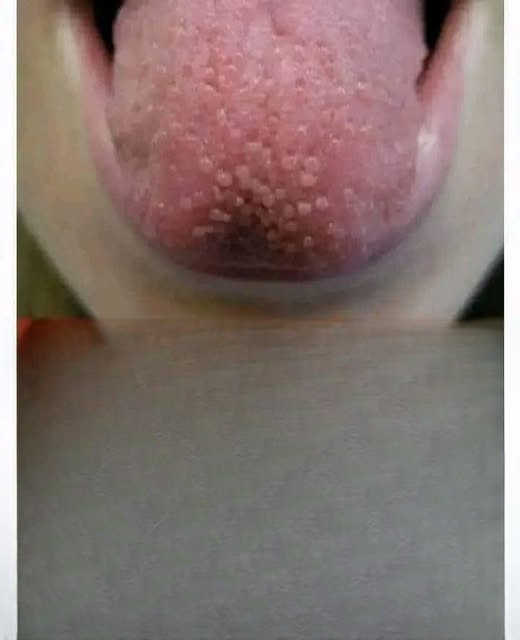
The tongue is more than just a muscle for speaking and tasting; it is also a window into overall health. Changes in its color, texture, or coating can signal underlying issues that may require attention. By recognizing certain tongue symptoms early, you can take proactive steps toward maintaining better oral and general health. Here, we explore four common tongue symptoms, their possible causes, signs to notice, self-care strategies, and when to consult a healthcare professional.
1. White Coating on the Tongue
A white coating on the tongue is one of the most commonly observed tongue symptoms. While it is often harmless, in some cases, it may indicate an oral yeast overgrowth, commonly known as oral thrush.
Why It Happens
White coating can develop due to several factors, including:
- Reduced oral hygiene: Accumulation of food particles and bacteria can form a white layer.
- Antibiotic use: Antibiotics can disrupt the natural balance of bacteria in the mouth, leading to yeast overgrowth.
- Weakened immune system: Temporary or chronic immune suppression can make the mouth more susceptible to infections.
Signs to Notice
You might observe:
- A thick white or yellowish layer covering part or all of the tongue.
- Mild burning or discomfort, particularly when eating certain foods.
- Unusual taste or persistent bad breath.
Self-Care Tips
- Gently brush your tongue at least twice a day using a soft toothbrush.
- Rinse with saltwater or baking soda solutions to help reduce yeast overgrowth.
- Limit foods high in sugar or yeast, as they may fuel the growth of oral yeast.
- Incorporate probiotic-rich foods, such as yogurt, to restore the natural balance of bacteria.
- Maintain overall oral hygiene and stay well-hydrated to support a healthy mouth.
2. Red, Bald, or Shiny Tongue
A smooth, glossy red tongue is another significant symptom. Unlike a white-coated tongue, this condition often points to nutritional deficiencies, particularly deficiencies in vitamin B12, folic acid, or iron.
Why It Happens
A red, shiny tongue can occur when your body does not receive enough essential nutrients or is unable to absorb them properly.
- Vitamin B12 deficiency: Can result from dietary insufficiency or malabsorption issues.
- Iron deficiency: Low iron levels often cause changes in the tongue’s appearance.
- Folic acid deficiency: Lack of folate may contribute to a smooth, red tongue.
Signs to Notice
- A smooth, glossy red surface on the tongue.
- Sensitivity or mild burning, especially when consuming spicy or acidic foods.
- Possible fatigue, paleness, or other signs related to mild anemia.
Self-Care Tips
- Include iron-rich foods like lean meats, lentils, and spinach in your diet.
- Consume foods high in vitamin B12, such as eggs, dairy products, and fish.
- Consider a B-complex supplement after consulting a healthcare provider.
- Avoid excessive alcohol or spicy foods if they worsen discomfort.
- Maintain balanced nutrition and regular medical checkups to monitor deficiencies.
3. Cracked or Fissured Tongue
A tongue with cracks or fissures is often harmless and sometimes hereditary. However, it may occasionally be linked to dehydration or underlying medical conditions.
Why It Happens
- Natural variation: Some people are born with small grooves or fissures in their tongue.
- Geographic tongue: A condition where patches of the tongue appear map-like, sometimes causing fissures.
- Skin conditions: Certain conditions, like psoriasis, may involve the tongue.
- Dehydration: Insufficient fluid intake can contribute to dryness and fissuring.
Signs to Notice
- Visible grooves or cracks along the tongue’s surface.
- Occasional discomfort, especially if food particles become trapped.
- Map-like or uneven patterns in some cases.
Self-Care Tips
- Gently brush the tongue to remove debris and prevent irritation.
- Ensure adequate hydration throughout the day.
- Avoid excessively acidic or spicy foods if they cause discomfort.
- Usually, no medical treatment is required unless pain develops or infection occurs.
4. Purple or Dark Tongue
A tongue that appears purple or dark may indicate issues with circulation, oxygenation, or certain nutrient deficiencies. While less common than white or red tongue symptoms, it deserves attention.
Why It Happens
- Reduced circulation: Can result in a bluish or purple tongue, especially in extremities exposed to cold.
- Mild cyanosis: Often linked to low oxygen levels in the blood.
- Vitamin B2 deficiency: Lack of riboflavin may affect tongue color.
- Respiratory conditions or cold exposure may contribute to a darkened tongue.
Signs to Notice
- Tongue has a purple or bluish hue.
- Cold hands or feet, indicating potential circulation issues.
- Occasional fatigue or lightheadedness.
Self-Care Tips
- Keep warm and practice gentle exercise to improve circulation.
- Focus on proper breathing, particularly if snoring or sleep apnea is present.
- Eat a balanced diet rich in B vitamins.
- Seek professional medical advice if symptoms persist, as they may indicate underlying health issues.
When to Consult a Healthcare Professional
While many tongue changes are harmless and manageable at home, certain signs warrant medical attention:
- Symptoms persist for more than one to two weeks.
- There is pain, swelling, or difficulty eating, speaking, or breathing.
- Symptoms are accompanied by fever or other systemic issues.
- Sudden changes in tongue appearance that cannot be explained by diet or hygiene.
Prompt consultation with a healthcare professional ensures proper diagnosis and prevents potential complications.
General Tongue and Oral Health Practices
Maintaining a healthy tongue involves more than just brushing teeth. Consider these practices for overall oral health:
- Brush your tongue daily using a soft toothbrush or tongue scraper.
- Stay hydrated throughout the day to prevent dryness.
- Avoid smoking and limit alcohol consumption, both of which can affect oral tissues.
- Schedule regular dental visits at least twice a year.
- Maintain balanced nutrition, focusing on vitamins and minerals essential for oral health.
Consistent oral care combined with attention to diet and lifestyle supports not only a healthy tongue but overall wellness.
Final Thoughts
The appearance of your tongue can reveal important clues about your health. White coatings, red and shiny textures, cracks, or dark discoloration all have potential causes ranging from minor hygiene issues to nutrient deficiencies or circulatory concerns. By paying attention to these signs and practicing good oral hygiene, you can address minor issues early and seek professional help when necessary.
Remember that preventive care and awareness are key. A healthy tongue is often a reflection of a healthy body, and small changes in daily habits can make a significant difference.
Your tongue is speaking—are you listening? By understanding these four common tongue symptoms, you can take proactive steps to protect your health, support your wellbeing, and maintain a confident smile.



Leave a Reply